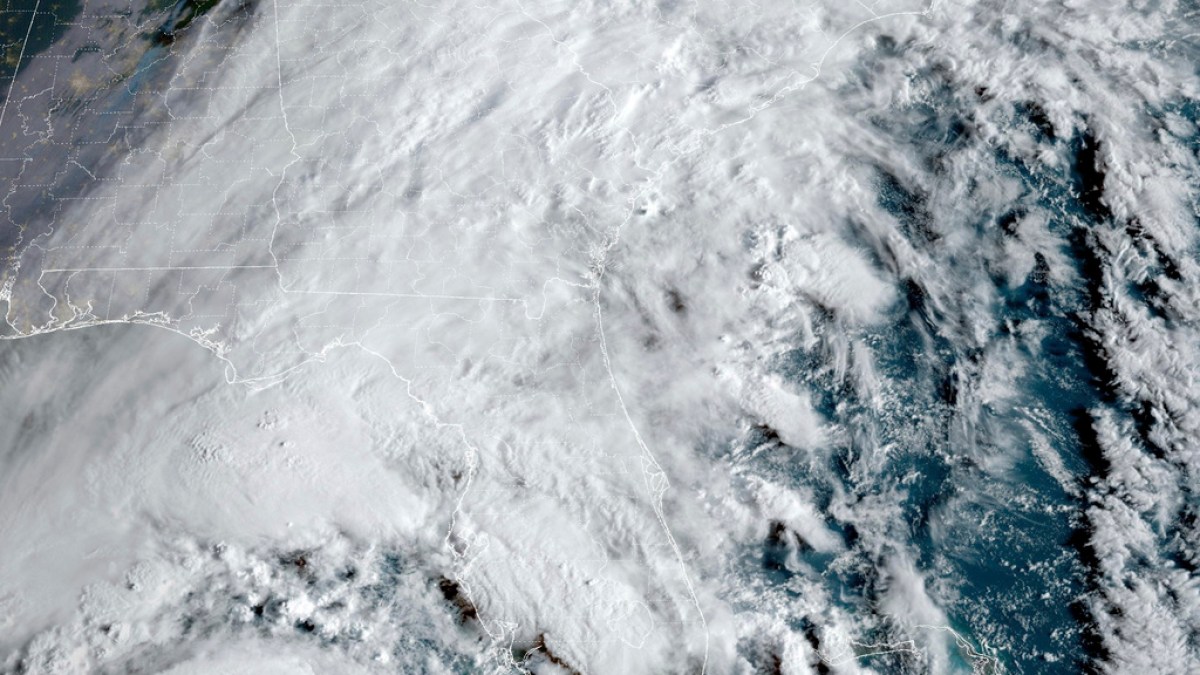Hurricane Helene has rapidly strengthened as it moves north up the Gulf of Mexico towards the United States, and is forecast to be one of the most dangerous storms in recent history to hit the coast of Florida.
Helene drew more force as it passed over deep, warm waters, fuelling its intensification on Thursday, the US National Hurricane Center (NHC) said.
Heavy rainfall was forecast for the southeastern US, with a “life-threatening storm surge” along the entire west coast of Florida, according to the NHC.
“A catastrophic and deadly storm surge is likely along portions of the Florida Big Bend coast,” the NHC said, predicting it could reach as high as 6 metres (20 feet) in Apalachee Bay.
“As someone who’s issued these forecasts, I assure you the folks at NHC don’t make these changes lightly. This is as big as it gets,” Michael Lowry, a hurricane specialist and storm surge expert with the local TV news weatherman in Miami, wrote on social media.
Helene is forecast to be one of the largest storms in breadth to hit the region in years, said Colorado State University hurricane researcher Phil Klotzbach. He said that since 1988, only three Gulf hurricanes were bigger than Helene’s predicted size: 2017’s Irma, 2005’s Wilma and 1995’s Opal.
Hurricane-force winds extend outward up to 95 kilometres (60 miles) from the centre, with storm-force winds covering up to 555 kilometres (345 miles). US states as far inland as Georgia, Tennessee, Kentucky and Indiana could see rainfall.
“Just hope and pray that everybody’s safe,” said Connie Dillard, as she shopped at a grocery store with thinning shelves of water and bread before hitting the highway out of Tallahassee, Florida’s state capital which is in the direct path of the storm. “That’s all you can do.”
Airports in St Petersburg, Tallahassee and Tampa were planning to close on Thursday, and 62 hospitals and nursing homes evacuated their residents on Wednesday.
#Helene is forecast to make landfall tomorrow as a major #hurricane in the Big Bend of Florida. It would be the 4th Gulf Coast hurricane landfall in 2024. Only 5 other years on record (since 1851) have had 4+ Gulf hurricane landfalls: 1886, 1909, 1985, 2005, 2020. pic.twitter.com/tGtWjWuNAM
— Philip Klotzbach (@philklotzbach) September 25, 2024
Forecast to reach Category 3
The only piece of good news was that the storm was downgraded to a Category 3 at landfall with winds of 193km/h (120mph), rather than higher Category 4 winds of 209km/h (130mph) as had been predicted on Wednesday.
On Thursday morning, Helene was located about 470km (290 miles) south of Apalachicola, on the coast of Florida’s so-called Big Bend area. It was moving north at 19km/h (12mph) with maximum sustained winds of 165km/h (103mph), making it a Category 2 hurricane on the Saffir-Simpson Hurricane Wind Scale.
Florida Governor Ron DeSantis issued an emergency warning for most of the state’s counties. About 18,000 electricity line workers are on standby to restore power once it’s safe to go into the area, and 3,000 US National Guard members are ready to help with the storm’s aftermath, officials said.
Federal authorities were positioning generators, food and water, along with search-and-rescue and power restoration teams, the White House said.
![Jerry McCullen, top of ladder left, and Carson Baze, top of ladder right, put plywood over the windows of a house ahead of Hurricane Helene, expected to make landfall Thursday evening, in Alligator Point, Fla., Wednesday, September 25, 2024. [AP Photo/Gerald Herbert]](https://www.aljazeera.com/wp-content/uploads/2024/09/AP24269562524681-1-1727359770.jpg?w=770&resize=770%2C513)
Some residents along the Gulf Coast in Florida’s Panhandle have evacuated to safer areas inland, with memories still fresh of recent storm surge events.
In 2018, Hurricane Michael struck the city of Mexico Beach, Florida about 160km (100 miles) west of where Helene is expected to make landfall. Michael rapidly intensified into a devastating Category 5 hurricane and caught residents off guard, causing an estimated $25.5bn in damage and 59 deaths.
In 2023, another Category 3 storm, Hurricane Idalia, left as many as 500,000 customers without power after it struck the northwest coast of Florida, also causing major flood damage from storm surge. Idalia was the most powerful hurricane to hit Florida’s Big Bend region since 1950.
Meanwhile, Hurricane John reformed on Thursday off Mexico’s Pacific coast after causing extensive damage earlier in the week, killing two people, blowing tin roofs off houses, triggering mudslides and toppling trees, officials said.
John weakened to a tropical depression after reaching land on Monday night before regathering strength, and is forecast to make another landfall in the Mexican state of Guerrero, north of Acapulco.
Helene is the eighth named storm of the current Atlantic hurricane season, which runs from June 1 to November 30, and the fourth to make landfall in the US. Hurricane Francine struck the Gulf Coast of Louisiana as a Category 2 storm barely two weeks ago.
Since 2000, only three other years besides 2024 have had four or more storms make landfall in the continental US.
This year’s hurricane season coincides with an insurance crisis for homeowners in some US states hit by rising fees and reluctance from private insurers to provide coverage in coastal areas.
The US National Oceanic and Atmospheric Administration predicted an above-average Atlantic hurricane season this year because of record-setting warm ocean temperatures. It forecast 17 to 25 named storms, with four to seven major hurricanes of Category 3 or higher.
But the season got off to a slow start, leaving forecasters searching for factors that may have impeded the formation of major storms as they cross the Atlantic Ocean “hurricane corridor”.




![Tyson Foods Plant [Photo: Food Manufacturing]](https://southarkansassun.com/wp-content/uploads/2023/08/iStock_1185520857__1_.5e441daa51cca-600x337.jpg)







![Silverado Senior Living Management Inc. [Photo: Los Angeles Times]](https://southarkansassun.com/wp-content/uploads/2023/10/download-6-4-600x337.jpg)

![China's Wuhan Institute of Virology [Photo: Nature]](https://southarkansassun.com/wp-content/uploads/2023/09/d41586-021-01529-3_19239608-600x337.jpg)
















